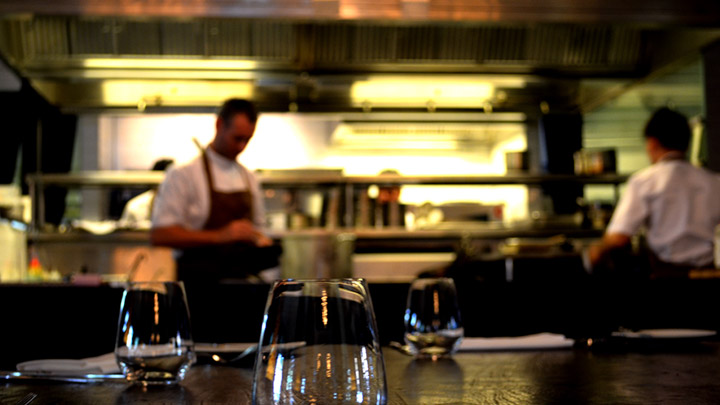Restaurant Payroll Management – Best Practices for Restaurant Operators
March 21, 2022 / Category: New York Payroll Management , Payroll Management
Running any restaurant without employees is impossible, suggesting that payroll is critical for restaurant managers, owners, and operators. The only thing is that calculating, distributing, and double-checking restaurant payroll for your workers is complex. Non-compliance with government mandates and errors can attract costly fines and taxes for your establishment.
Before delving further into that, understand that, on average, the market size of New York’s restaurant industry has grown 2.2% every year between 2017 and 2022. Even so, restaurant payroll remains the most challenging and heavily regulated responsibility. Also, you need dedicated resources to comply with regulations while accurately completing payroll on time.
The first step towards understanding NY restaurant payroll as an owner or operator is familiarizing yourself with the essential responsibilities, concepts, and regulations.
Two Options for Running NY Restaurant Payroll
- Processing your payroll yourself can save you money and paper. Unfortunately, in-house manual payroll is time-consuming. Also, the risk of making costly errors when navigating the complex world of payroll, in this case, is high.
- Outsourcing your restaurant’s payroll by opting for a service like Premier Payroll Solutions ensures compliance with regulations. The option will also help you pay your workers correctly and on time.
Employee hours worked and schedules will dictate how you calculate your restaurant’s payroll. The best part is that Premier Payroll Solutions allows access to automatic systems that create labor accrual journal entries. This process streamlines the time-consuming process of restaurant payroll management. Below are some of the payroll best practices you should consider adopting as a restaurant owner or operator in New York.

Best Practices for Managing Your Restaurant Payroll
1. Prioritize Effective Communication
Defining the person authorized to give payroll department direction and establishing a communication flow will result in a high-functioning payroll department. For instance, if you need to change a worker’s W-4 or get a pay rise, such changes should be apparent and in writing.
It would be best to involve all relevant individuals to gain a sound understanding of what is happening at the store level. That, in turn, will foster clarity and accountability in your payroll operations.
2. Define the Paperwork You Should Keep and for How Long
Indeed, your restaurant’s payroll department will become heavily involved once you onboard or terminate an employee. Note that both procedures involve a lot of paperwork. State and federal regulations require employers to maintain a master file for each worker. Without such a file, an employer cannot verify whether a worker’s claim for back pay is justified or not.
Additionally, making updates to necessary documents may become nearly impossible if a particular employee does not have a designated location. Also, understand that there are multiple payroll laws to comply with regarding recordkeeping.
Most government agencies and regulations, including the International Register of Certificated Auditors, Occupational Safety and Health Administration, and the Fair Labor Standards Act, define the records that restaurant operators should maintain. So, you need to familiarize yourself with state laws and ensure that you have a central location for organizing and storing your master file.
Your master file should include:
- Data for a payroll period and calendar year, including total Medicare tax withheld, total wages subject to local income, federal and state taxes, full social security tax withheld, total wages subject to Medicare tax and social security tax, and tax paid by an employer that is not deducted from wages.
- Basic employee data like the state where services are rendered, name, occupation, address, social security number, gender, and birth date.
- Tax and payroll data like marital status and allowances claimed.
- Work-specific data. This includes shift bonus, new hire date, overtime hours, payment date, straight time hours, termination date (where necessary), hours worked per day and week, basic and hourly pay rate, pay frequency, and additions/deductions from pay.
3. Focus on Proper Tip Handling
Tipping is customary for restaurants. The IRS requires an annual 8027 report to reconcile tips reported against what “should have been” reported. 8% of all tippable sales must be allocated to tippable sales or reported as tips, and that is according to the IRS. If a worker is reporting less than 8% of the tips they receive, it is a signal to a restaurant manager that such an employee needs more training.
Doing so also suggests that such an individual is not truthful when reporting tips. According to a 2013 ruling, a restaurant’s automatic service charges or tips must be termed wages and taxed accordingly. Also, any tips that a worker does not receive directly, but are paid out on their paycheck, should be included in the available wage calculations for purposes of garnishment.
In that case, consider providing customers with 15%, 18%, and 20% tip calculations if you are looking for a way to require or recommend particular tip amounts on larger bills.

4. Manage Overtime and Employee Sharing Accordingly
The restaurant industry has unique staffing requirements. That is the case since one employee may work at more than one location within the same establishment. When that is the case, it can complicate overtime calculations, which adds to the responsibilities of payroll staff. So, recognizing when sharing has occurred and properly calculating a worker’s overtime is not an option in this case.
You can achieve that by developing an internal practice outlining the payroll process for shared employees. Doing so will help you determine what store is an employee’s “home” store even as you establish rules for where overtime expenses should be charged to.
Conclusion
Payroll is a constantly recurring task for your restaurant, and you need to process it accurately and on time, both for your workers and your status as an entity. Even as you consider outsourcing the service to Premier Payroll Solutions, ensure you understand the basics. That will allow you to make the best decisions for your employees and management team.
Remember that payroll management software saves you money and promotes efficiency as well. If you need a free quote from your local NY restaurant payroll provider, contact us today!






